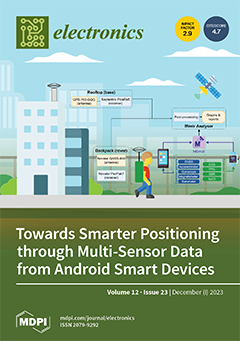Speech emotion recognition (SER) is widely applicable today, benefiting areas such as entertainment, robotics, and healthcare. This emotional understanding enhances user-machine interaction, making systems more responsive and providing more natural experiences. In robotics, SER is useful in home assistance devices, eldercare, and special
[...] Read more.
Speech emotion recognition (SER) is widely applicable today, benefiting areas such as entertainment, robotics, and healthcare. This emotional understanding enhances user-machine interaction, making systems more responsive and providing more natural experiences. In robotics, SER is useful in home assistance devices, eldercare, and special education, facilitating effective communication. Additionally, in healthcare settings, it can monitor patients’ emotional well-being. However, achieving high levels of accuracy is challenging and complicated by the need to select the best combination of machine learning algorithms, hyperparameters, datasets, data augmentation, and feature extraction methods. Therefore, this study aims to develop a deep learning approach for optimal SER configurations. It delves into the domains of optimizer settings, learning rates, data augmentation techniques, feature extraction methods, and neural architectures for the RAVDESS, TESS, SAVEE, and R+T+S (RAVDESS+TESS+SAVEE) datasets. After finding the best SER configurations, meta-learning is carried out, transferring the best configurations to two additional datasets, CREMA-D and R+T+S+C (RAVDESS+TESS+SAVEE+CREMA-D). The developed approach proved effective in finding the best configurations, achieving an accuracy of 97.01% for RAVDESS, 100% for TESS, 90.62% for SAVEE, and 97.37% for R+T+S. Furthermore, using meta-learning, the CREMA-D and R+T+S+C datasets achieved accuracies of 83.28% and 90.94%, respectively.
Full article





